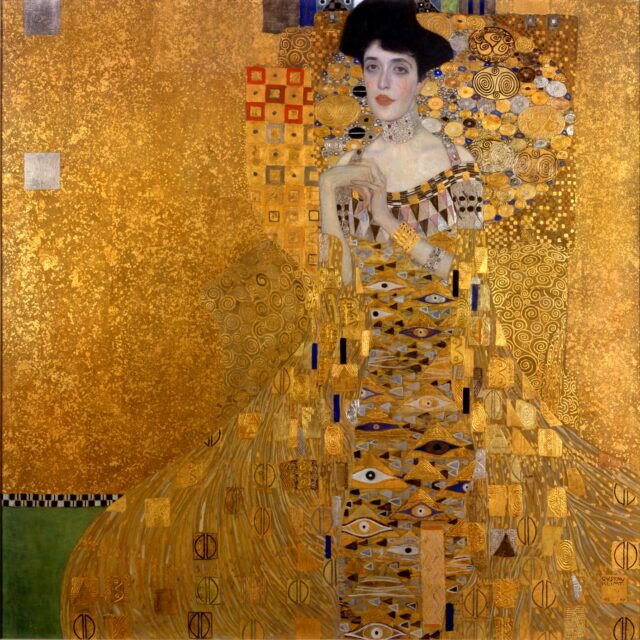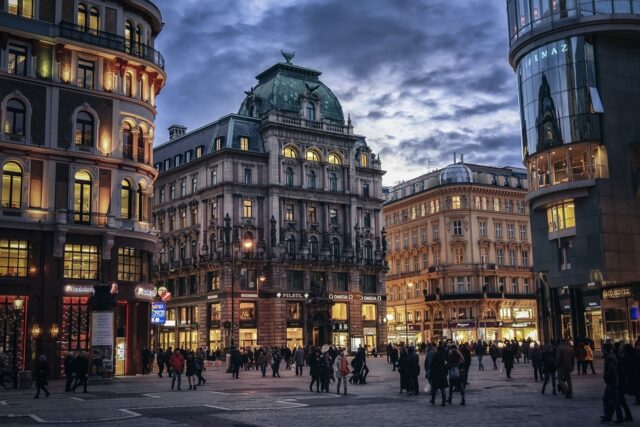From The Paris Review:
I am looking at a photograph of a late-middle-aged man in a gray suit with broad lapels. He is wearing a bow tie. There are dark leaves behind him and the lines of a sunlit house. His right hand dangles across the armrest of a wicker chair in which he is sitting with one leg draped over the other. The left hand, wearing a signet ring, rests on a round table and is loosely holding a cigarette. The face could belong to a European diplomat or businessman of a now extinct type: refined, austere, intellectual. The dark, dense eyebrows add an expression of calm virility. The only incongruous detail is the eyes: they are closed.
One assumes at first that the snapshot was taken at the moment of blinking. But it is difficult to imagine this face with the eyes open, because all its features and in fact the whole gesture of the body, which at first glance appeared so urbanely relaxed in its well-tailored suit, are drained of motility, as if drugged. At any minute, the cigarette may drop from between those slackly curved fingers. Is this a picture of mortal exhaustion or of extremely attenuated contemplation? Probably it is both. The man depicted is Robert Musil, who died at the age of sixty-one, less than two years after this photograph was taken. At Musil’s funeral, which was attended by eight people, the eulogist applied to him a statement Musil had made about Rilke: “He was not a summit of this age—he was one of those elevations upon which the destiny of the human spirit strides across ages.”
Today no one would dream of describing a human being in such grandiose terms—a political program, perhaps, or a space mission, but not a person, and certainly not a writer. It may have something to do with the expectations writers have of themselves, and with a rather diminished sense, generally, of the human spirit having any sort of destiny. Perhaps it’s better that way. A more modest perspective may open up a vision of what is staring us in the face: that unless we supply the essential necessities to the collective body of man, the spirit may have to find another planet for the fulfillment of its destiny. Musil himself was coming to a similar conclusion near the end of his life (chastened, perhaps, by the enormity of World War II and by his own experience of severe poverty): “The most important thing is not to produce spiritual values, but food, clothing, security, order … And it is just as important to produce the principles necessary for the supply of food, clothing, etc. Let us call it—the spirit of privation.” Elsewhere he described himself as “building a house of cards as the earth begins to crack.”
The house of cards was a huge, phenomenally ambitious construction, more than twenty years in the making and never finished, titled The Man without Qualities—a satire on the collapse of the Austro-Hungarian Empire, a utopian novel about untried possibilities of being, a meditation on the nature of history, a critique of the major ideologies of the twentieth century, an attempt to combine the different exactitudes of reason and mysticism. The book, a critical success after its first volume was published in 1930, was virtually unknown at the time of the author’s death in 1942. Today it is frequently mentioned along with Ulysses and In Search of Lost Time as one of the great modern novels.
. . . .
One of Ulrich’s favorite maxims is that reality is just a possibility: everything that happens could have turned out differently. So it is no surprise to him when, almost immediately after he begins his retreat from active engagement with the world, his father, a prominent legal scholar, introduces him to a circle of socialites, aristocrats, financiers, and intellectuals who are nothing less than obsessed with action. They are planning a “great patriotic campaign” to celebrate the seventieth jubilee of Emperor Franz Josef in December 1918. They call it the Parallel Campaign because a similar festival is being prepared in Germany for the thirtieth anniversary of Kaiser Wilhelm II’s reign in the same year. Upstaging the Germans is no small matter, especially as the Parallel Campaign’s director, the benign and elderly Count Leinsdorf, seems constitutionally unable to make a decision without crippling it with dilatory maneuvers. But the ultimate goal is both noble and grand: to demonstrate, with a resounding festival, Austria’s preeminence among nations as a fountainhead of culture, intellect, beneficence, peace, and, why not, military might as well.
Link to the rest at The Paris Review
One of the many benefits of being married to Mrs. PG is that she has helped PG understand some fascinating history he did not know anything about prior to marrying her.
Partially as a result of studying in Vienna for a period of time during college, Mrs. PG knew and knows quite a bit about the Austro-Hungarian Empire, which was ruled, as mentioned in the OP, by the Emperor Franz Joseph in the early 20th century.
This empire was a sprawling constitutional monarchy in Central and Eastern Europe that existed between 1867 and 1918. Only Russia was larger. The empire was effectively a coalition of the two most populous ethnic groups in the region, Austrians and Hungarians. Vienna was its capitol. However, the two groups had separates parliaments and government administrative structures, plus the nation also had 17 different Crown Territories which included yet other ethnic and language groups and subgroups. The Crown Territories were also autonomous to some degree. As might be anticipated, these competing power structures caused no end of misunderstanding and disagreements.
Major ethnic groups included Germans, Hungarians, Czechs, Slovaks, Poles, Ukrainians, Slovenes, Croats, Serbs, Romanians and Italians.
The Basic State Act governing the empire stated, in part, “every race has an inviolable right to the preservation and use of its own nationality and language . . . . In those territories in which several races dwell, the public and educational institutions are to be so arranged that, without applying compulsion to learn a second country language, each of the races receives the necessary means of education in its own language.
A 1910 census found that 23% of the empire’s citizens spoke German as a mother-tongue, 20% Hungarian, 13% Czech, 10% Polish, 8% Ruthenian (Ukrainian), 6% Romanian, 5% Croat, 4% Slovak, 4% Serbian, 2% Slovene, 2% Italian, and 5% another of the languages which the survey asked about, including Bulgarian, Bunjevac (a Štokavian dialect of Croatian), and Romani.
As might be imagined, selecting the language in which government affairs and administration would be conducted was a continuing challenge.
In addition to being the home of the Viennese waltz and its prominent composers, the Strauss family, Austria-Hungary and, in particular, Vienna gained a widespread reputation for its lovely culture. Joseph Haydn, Wolfgang Amadeus Mozart, Ludwig van Beethoven and were members of what has been called The First Viennese School of classical music (which sometimes also includes Franz Schubert). Gustav Klimt and Oskar Kokoschka represent Vienna’s visual artists.
About two million Jews lived in the Empire in 1900. While the majority lived in rural areas, there were large urban communities in Vienna, Budapest and Prague. Due to the benevolence of long-serving Emperor Franz Joseph, during the early part of the 20th century, Jews comprised about half of all physicians and lawyers/jurists in Hungary.
With the assassination of Archduke Ferdinand, heir to the Austro-Hungarian throne in the Bosnian capitol, Sarajevo, in 1914, the Empire began to fall apart. The assassination was part of a plan for the creation of an independent Serbian state. Austria-Hungary declared war on Serbia on July 28, 1914, which is generally regarded as the beginning of World War I.
The Austrian army invaded, but could not decisively defeat the Serbs until German generals took over leadership from the Austrians. This was the beginning of a period during which Austria-Hungarian troops did not do well in battle as well as the choice of Austria to side with the losers of both World War I and World War II.
Today, the territory of the former Empire is divided between 13 different Central and Eastern European nations.

